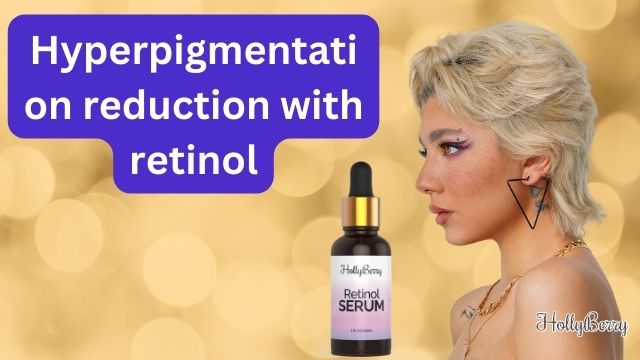
Hyperpigmentation is a common skin condition that occurs when there is an excess of melanin, the pigment that gives colour to our skin, in certain areas. This can result in dark spots, age spots, or uneven skin tone. Hyperpigmentation can be caused by a variety of factors, including sun exposure, hormonal changes, and certain medical conditions.
One of the most effective ways to reduce hyperpigmentation is through the use of retinol, a form of vitamin A that is commonly found in skincare products.
Retinol has been shown to increase cell turnover and boost collagen production, which can help to fade dark spots and improve the overall appearance of the skin. In this post, we will explore the benefits of retinol for reducing hyperpigmentation and how to use it safely and effectively.
How Retinol Works for Hyperpigmentation?
Retinol works by penetrating the upper layer of the skin and accelerating the skin cell turnover process. This helps to remove the old, pigmented skin cells on the surface, revealing the new, healthy skin cells underneath. Additionally, Retinol can also inhibit the production of melanin, the pigment that gives colour to our skin and cause hyperpigmentation. This will help to fade dark spots, age spots, and uneven skin tone.
Retinol also stimulates collagen production, which can help to keep the skin firm and smooth. The increased collagen production also helps to plump up the skin and reduce the appearance of fine lines and wrinkles. Overall, the use of retinol can help to improve the overall health and appearance of the skin.
How to Use Retinol Safely and Effectively for Hyperpigmentation
It is important to start slowly when using retinol, as it can be harsh on the skin at first. Begin by using a low concentration of retinol, such as 0.5%, and gradually work your way up to a higher concentration.
It’s also recommended to use retinol at night. The skin naturally repairs itself at night, and using retinol at this time can help to boost this process. Additionally, retinol can make the skin more sensitive to the sun, so it’s best to use it at night to minimize the risk of sun damage.
It is also important to use sunscreen with at least SPF 30 plus during the day when using retinol. Retinol can make the skin more sensitive to the sun, so it is essential to protect the skin from further damage.
It’s also recommended to use retinol in conjunction with other products that can help to reduce hyperpigmentation. Such as using a product with Vitamin C and/or Niacinamide that has also been shown to be effective in reducing hyperpigmentation.
Lastly, it’s important to be patient when using retinol. It can take several weeks or even months to see a noticeable improvement in the skin.
how long will it take to reduce Hyperpigmentation with retinol
The length of time it takes to see a noticeable reduction in hyperpigmentation with retinol can vary depending on a number of factors, including the severity of the pigmentation, the strength of the retinol product being used, and an individual’s skin type.
Typically, it can take several weeks to a few months to see a noticeable improvement in the skin with retinol. However, in some cases, it may take longer, especially if the pigmentation is severe.
It’s also important to note that individual results can vary and that for some people it can take longer for them to see results. Also, using retinol is not a one-time solution, it takes continuous usage to achieve long-term benefits.
It’s important to be patient and consistent when using retinol and to continue using the product even after the pigmentation has improved to maintain the results.
It is also recommended to always check with a dermatologist before using any product, especially if you have any medical condition.
Conclusion
Hyperpigmentation is a common skin condition that can cause dark spots, age spots, and uneven skin tone. Retinol is a form of vitamin A that can be effective in reducing hyperpigmentation.


